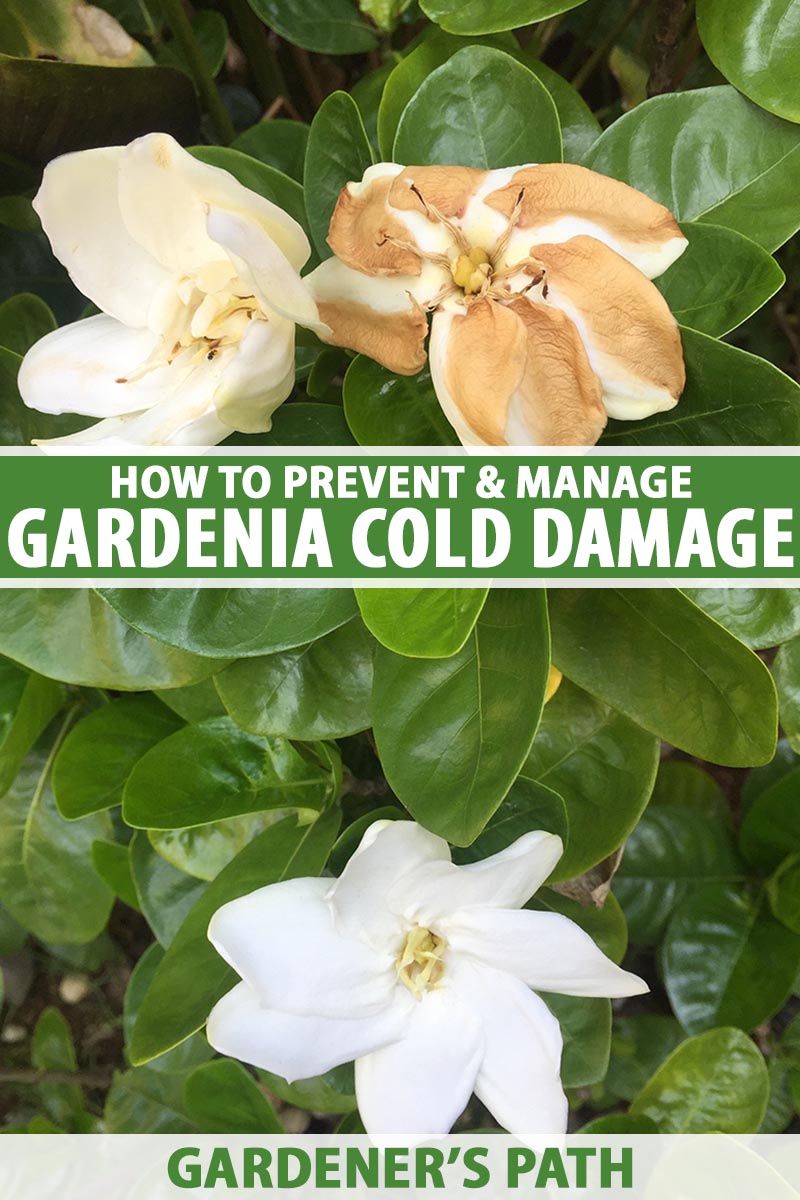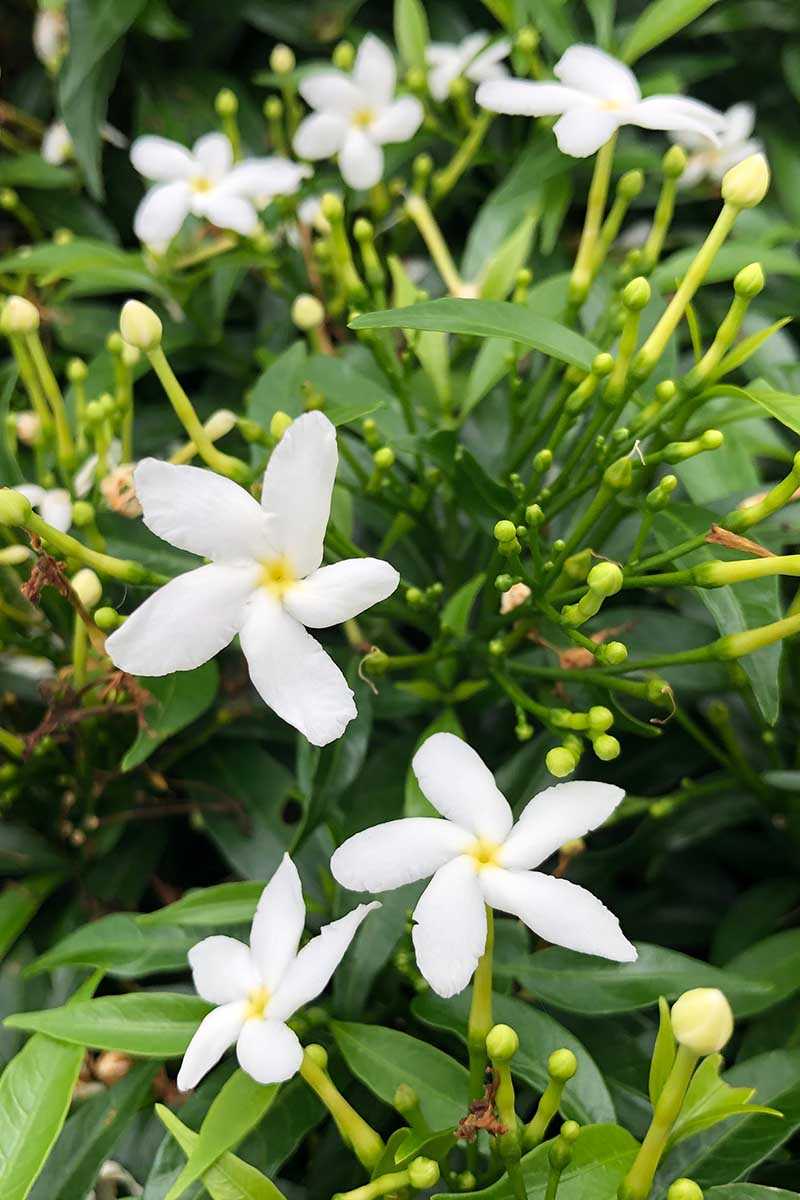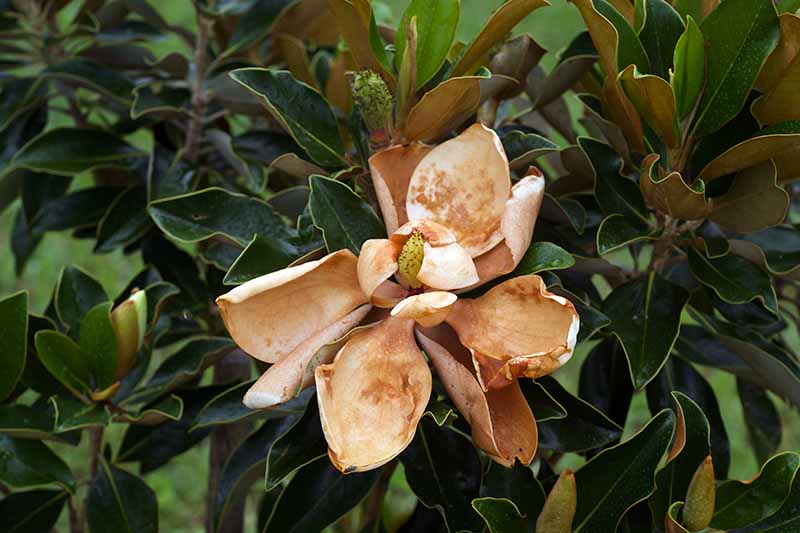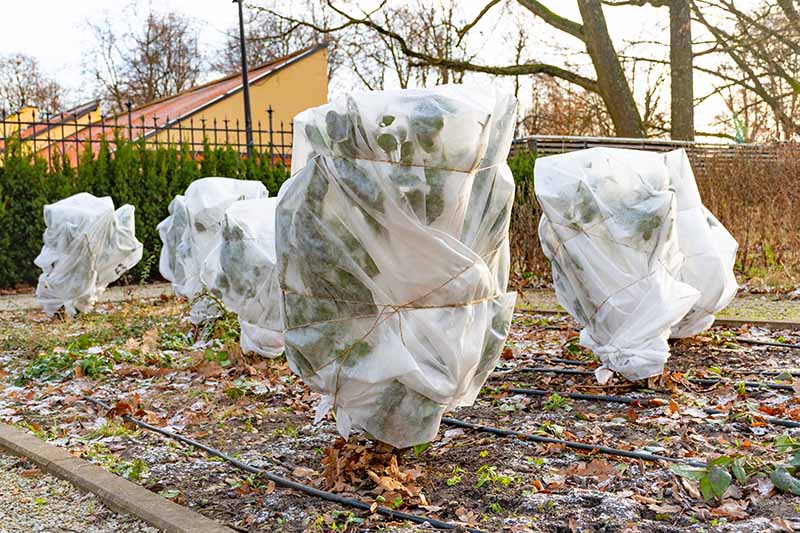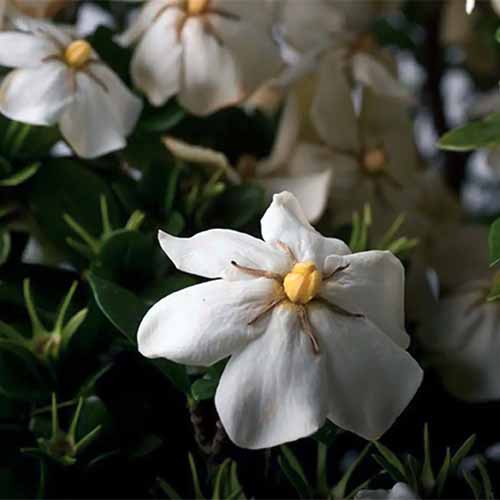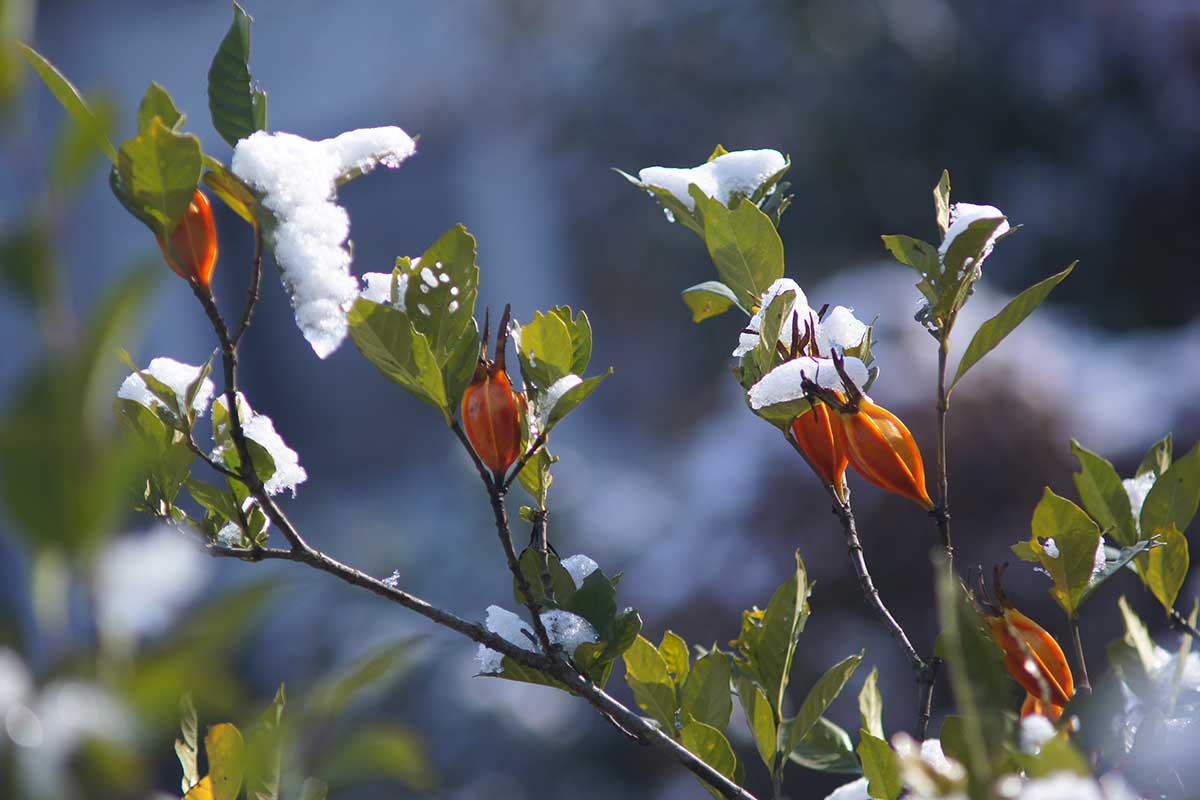If you’re left wondering whether the ornamental shrub, Gardenia jasminoides, could come back from that damage, my answer is a definite, “Maybe.” We link to vendors to help you find relevant products. If you buy from one of our links, we may earn a commission. Here’s what we’ll cover:
Can Gardenias Survive Cold Damage?
I’ve lived in two Southern states, among many gardeners devoted to growing these fragrant shrubs outdoors. But if your evergreen shrub has brown leaves and brittle stems in the aftermath of a prolonged hard freeze or an unexpected snowstorm, that’s a sure sign it has sustained cold damage. A few newer hybrids can sustain the lower wintertime temperatures in Zone 7, where you’ll find an average minimum range of 0 to 10°F. The daisy-bloom ‘Kleim’s Hardy,’ for example, is cold hardy in Zone 7. It is available from Home Depot in 2.5-gallon containers. ‘Kleim’s Hardy’ A couple of hybrids are even considered hardy in -5 to 0°F temperatures like what you’ll find in USDA Hardiness Zone 6b. So, it’s not a given that a gardenia will succumb to the cold. Will it survive? This depends on whether the plant was healthy ahead of the freeze and how much damage it incurred. Keep reading for tips on assessing the damage.
How to Assess and Prune Cold-Damaged Shrubs
Discovering that your precious evergreen is sporting crunchy brown or black leaves and branches is a sad sight, but it may not spell disaster. Most gardenias will suffer some cold damage at temperatures below 20°F, and even the uber-hardy types might lose a few leaves to browning in colder temperatures. Here’s the good news: Unless the plant has died all the way down to the roots, it might put out new growth with the return of warm weather. Of course, a plant with mostly dead branches after suffering damage in winter or early spring is not going to bloom that season, even if it grows new shoots. That’s because gardenias form buds in the autumn for the next year’s flowers, and a prolonged hard freeze will kill both the branches and the buds. When you’re trying to figure out if your cold-damaged shrub is dead, be patient. It may not send up new shoots for weeks, or until the middle of spring. Don’t give up hope until midsummer. The new growth will emerge from the base of the plant. You can help things along by pinching the terminal end of each shoot when it’s five or six inches long to encourage the tree or shrub to fill out. You can prune away the dead portions, but wait until spring when temperatures are consistently above freezing. You’ll just make the plant more vulnerable to cold damage if you clip the branches ahead of more freezing weather. You can cut the stems back to the point where you see new growth, or cut the whole shrub at the base when you prune. Afterward, be sure to feed the shrubs with acidic fertilizer or fish emulsion to promote new growth, using whatever product you ordinarily favor. At this point, you can pause to mourn the loss of this year’s blooms or just be grateful your plant survived the freeze damage. And vow to do better at protecting your plants from cold damage, following the tips below.
3 Tips to Protect Gardenias from an Impending Freeze
Taking a proactive approach to protecting your plants from an unexpected hard freeze will give them the best chance of survival.
1. Keep an Eye on the Weather
If you’ve ever lost entire shrubs to an unexpected freeze, you’re probably already convinced of the wisdom of watching the weather carefully. With a little advance warning, you can take steps to protect your plants. Be especially wary when big snowstorms are predicted in late spring, and your gardenias are already blooming. Buds and blossoms are far more susceptible to cold damage than old growth from last fall.
2. Water Well
For both in-ground plants and those growing in containers, if the soil is dry an inch or two below the surface, give it a thorough watering two or three days ahead of a predicted hard freeze. This step is extra important when you’re growing your plants in sandy soil. Moist soil is more likely to retain needed heat, but sand doesn’t stay moist for very long. Container-grown gardenias are more vulnerable to freeze damage since they may not have as much moisture in their soil, and a container of dirt freezes far more quickly than the ground. However, do make sure supplemental water drains before the storms or frigid temps arrive. Pooled water may freeze and kill the roots.
3. Move Plants or Provide Protection
If you can, move potted plants to a protected area to wait out the weather. Placing them inside a shed or beneath a dense evergreen are two prime possibilities. You may want to cover your gardenia during a cold spell, too, using a frost cloth, an old blanket, or double layers of plastic. Make sure the cover reaches the ground, and weigh it down with a brick or stone as needed. You can also surround the plant with a tomato cage filled with dry pine straw or leaves, covering all exposed areas. Just be sure to remove the materials as soon as the temperatures warm.
Freeze Damage Prevention
Let’s discuss the harshest, most bleak prevention measure first. The best guarantee of zero cold damage is to forgo gardenias altogether in favor of other flowering shrubs that are more suited to the local climate if unexpected cold snaps are common in your growing area. Am I going to recommend that ground zero option? Life without gardenias wafting their spicy scent over the lawn or patio on a summer evening seems pretty grim to me, but if you’re opposed to the extra work involved in making sure the plants survive in areas with cold winters, this could be your best option. Less extreme strategies won’t deter cold damage if an unexpected blizzard hits once the shrubs are blooming in late spring or if there are weeks of record low temperatures one winter. But these tactics will help prevent most incidents, and I consider them well worth the effort. First, make sure to keep giving your gardenias supplemental water as needed, even in cold weather. Moist soil holds heat better than dry soil. As long as the soil drains well, the risk of damage or disease shouldn’t be a problem. It’s more difficult for these evergreens to draw up water when the soil is cool, so you want to make sure they have plenty of moisture available. When they don’t, they become weak and are more susceptible to a killing frost. Just be careful not to overwater and allow the soil to become waterlogged, which may increase the risk of root rot. Also, stop your fertilizer regimen about two months ahead of the typical onset of freezing weather in your area. Fertilizer encourages new growth, which is the most vulnerable to cold damage. Also try to select the most cold-hardy cultivars to grow that are suited to your area if you are choosing new plants. Standard heirloom types are likely to only be hardy in Zones 8 to 11, where the minimum temperature usually dips no lower than 10°F. Scent Amazing™ gardenias, for example, can sustain winter temperatures in Zone 7. These are available from Home Depot in two-gallon containers. Scent Amazing You can also opt to bring your shrubs indoors to overwinter. Learn the how-tos in our guide. Finally, consider growing gardenias only as indoor plants if your region gets too cold or if you’ve lost shrubs in the past. They’ll bloom indoors with the same phenomenal scent, but without the worries of freezing.
Step Back, Jack Frost!
Unexpected temperature fluctuations will always pose a challenge for flower gardeners, so it’s encouraging to have plenty of ways to fight, treat, and prevent freeze damage on gardenia shrubs.
Do you have experience in this area? The comments section below will happily accept your input, whether you have tips to share or questions to ask. And if this coverage was valuable for you, check out these gardenia guides next:
How to Grow and Care for Gardenia PlantsBring Their Intoxicating Scent Indoors: Tips for Growing Gardenias as Houseplants
